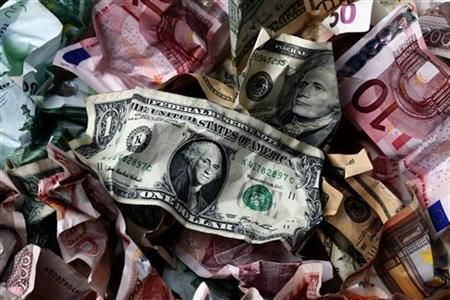U.S. Banking Outlook: A Bleak 2012 of Slow Growth and Euro Woes

The U.S. banking industry is undergoing its most radical structural change since the Great Depression, according to the Standard and Poor's Ratings Services on Thursday.
The year 2012 will be a challenging one for the sector amid continued debt reduction by corporations and households, slowing trade flows and extremely low interest rates. At the same time, contagion from Europe's sovereign debt crisis remains a major concern.
Although most U.S. banks have minimal direct exposure to the Eurozone, problems abroad could still hurt banks at home.
Direct claims by U.S. banks on the Eurozone amounted to less than 6 percent of total U.S. banking industry assets, as of the second quarter of 2011, according to Treasury International Capital System and the Federal Reserve. However, global slowdown will lead to lower top-line growth in financial assets and revenues for the U.S. banking sector, and potentially cause credit quality to slip.
"Despite the somewhat improved economic indicators the Fed recently released, we expect reduced profitability for the U.S. banking industry through 2013," Rodrigo Quintanilla, analyst with the rating agency wrote in a Thursday's research report.
The report projects that the banking industry's reported profitability will be between 19 percent and 20 percent for 2012, and range between 17 percent and 18 percent for 2013.
The rating agency's forecast for decelerating profits is based on four key assumptions.
First, banks had significant accounting gains in the third quarter of 2011 related to debit valuation adjustment and loan loss reserve releases.
Second, revenue growth likely will remain muted because of low interest rates, and the market- and transaction-related income should remain depressed because of the sluggish U.S. economy and high volatility in the global capital markets.
Third, operating expenses should remain high as banks incorporate the regulatory changes that the Dodd-Frank Act mandates.
Finally, credit costs should be higher than previously anticipated after seven consecutive quarters of credit quality improvement. Net charge-offs are also expected to decline at a much slower pace.
Looking ahead, Standard & Poor's estimates that although U.S. banks' capital ratios have improved since the crisis, they could still fall short of meeting the Basel III common equity Tier 1 minimum by $330 billion to $430 billion.
"To meet this estimated shortfall, the U.S. banks would have to reduce total assets by $4 trillion to $4.8 trillion, or about one-third of the $12.3 trillion in assets of all U.S. banks as of Nov. 23, 2011," Quintanilla wrote.
© Copyright IBTimes 2024. All rights reserved.






















